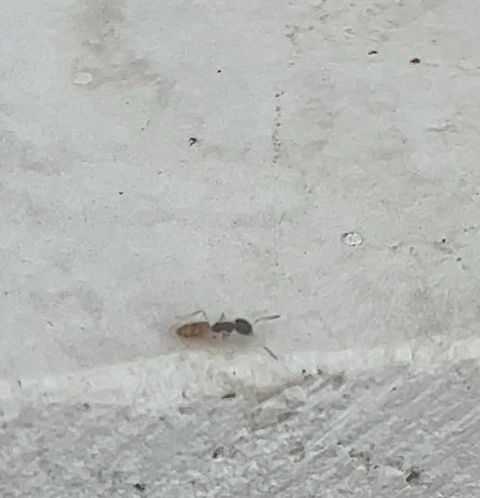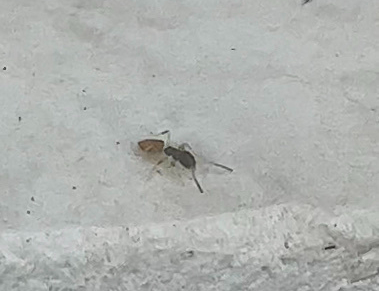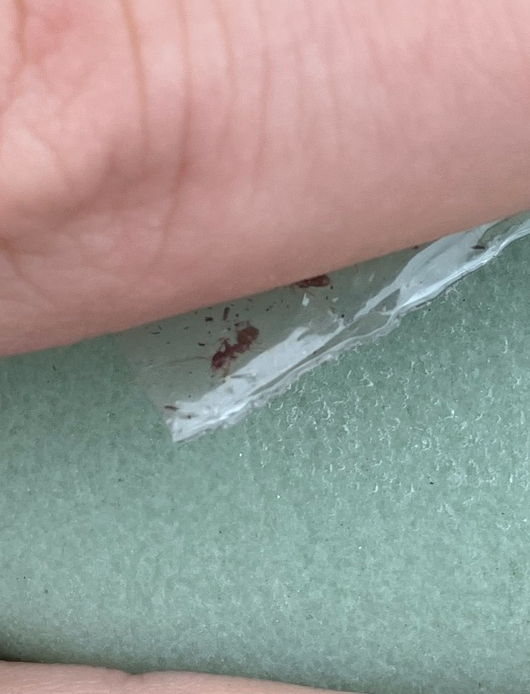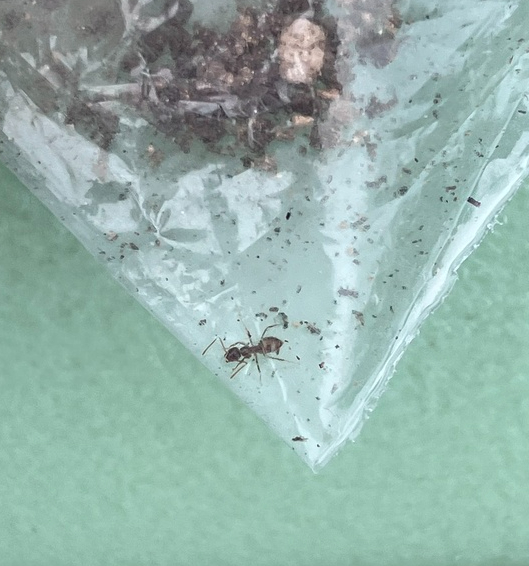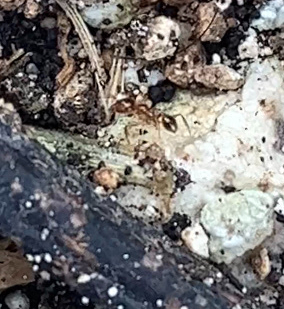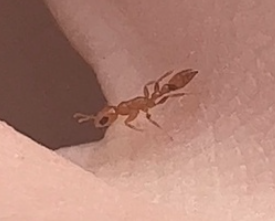Let's start off with ignoring the fact that this is my first post in about half a year.
Okay, in case you didn't know, the Bahamas is a country off the coast of Florida that consists of nearly 700 islands. Out of those 700 islands I visited one, and possibly the worst island I could've picked for documenting ant species: Nassau. Nassau is basically all developed land, and if you guys know anything about developed land and islands, you'll know the ants there are slim pickens.
So let me tell you about that time I found a bunch of ants on an island.
Entering the Bahamas, I had high hopes that I'd find some cool species that I wouldn't find in Massachusetts, like Solenopsis geminata or Cephalotes.
... Well...
Immediately, the first ant that I (consciously) encountered was Tapinoma melanocephalum, commonly known as Ghost Ants. These were pretty much everywhere on my porch, trailing up and down the concrete beams. Sure, it's not something I'd find in wild Massachusetts, but, like, come on. T. melanocephalum, for those of you who somehow don't know, are an infamous tramp species that can be found on every continent, literally one of the biggest distributions of any ant species. Their light coloured legs and abdomen make their dark coloured mesosoma and head look like floating specks (hence, the name Ghost Ants). They are stupidly good at moving quickly and are pretty polygynous.
"... regardless of whether you are in Guinea, New Guinea, or Guyana, if you are sitting at a table with a sugar dispenser you are likely to see workers of T. melanocephalum running about on the surface."
- Longino
After that awful experience, I took it to explore where I was staying. Luckily- because the area I was in was still under development- there were tons of empty lots that I could explore. There, not only did I find some termites, but I also found my second and third species. The third species I didn't actually get any photos of and I just know that it's a small black twig ant. But the second species was a tropical Nylanderia. As the week went by I saw more and more of these workers and colonies. One rock I flipped contained two queens, so now I know that they're polygynous. I took a bag I had on me and scooped them up for some better photos (lo and behold, they were very quick, living up to the genus' common name, Crazy Ants).
At first I thought that they could have been Paratrechina longicornis, or Black Crazy Ants (BCA). After all, they are a very common tropical tramp species with a distribution even broader than T. melanocephala, and the colony's queens have similar colourations (dark red mesosoma with darker head and abdomen). However, with the help of another Ant Keeper (he actually just told me I did next to nothing for its identification), I ended up marking it down as some sort of Nylanderia. I did bring back dead specimens of the workers, so I can try and identify it under a microscope then.
After walking around for a bit longer, I found the species that I had been hoping I'd find- or rather, genus. Pheidole megacephala is an invasive species that's also known as the African Big-headed Ant. The first worker I found was alone, but soon I did find a colony with a queen and even a major (the first Pheidole major I've seen, actually). The queen still had her wings on so it's possible she never mated, but due to their tendency to have massive polygynous and polydomous colonies that often bud instead of flying, it's still possible that she was fertile (budding is when colonies send fertile queens out with workers on the ground to establish new colonies).
The final two ant species I never found any colonies of, but I think still deserve notable mentions.
The first of the two was Pseudomyrmex simplex, the Simple Twig Ant. For once, a confirmed native species of the Bahamas, P. simplex lives in dead twigs of shrubs (hence their name), but these workers were simply foraging along the deck of a beach-side house. I was hoping to have found a queen just to have been able to say that I've seen Pseudomyrmex queens before, but I guess I was late on their flights (this was literally a couple days ago).
The second was a dead Camponotus floridanus worker. She was just chilling on the bottom part that sliding glass doors, well, slide on. For whatever reason, AntMaps says that there's no records of C. floridanus in the Bahamas, although that being said, the Bahamas probably is pretty understudied. Though, I did find a grainy post of C. floridanus on iNaturalist, identified by Mettcollsuss himself, so... I didn't actually get any photos because it was at a Christmas Eve's party with my cousins, and taking photos of a dead ant is a little awkward, so I guess you'll just have to trust me on this one.
And that's it. I really enjoyed my time there, albeit I never found any S. geminata nor Cephalotes, but it was a nice change of scenery from C. pennsylvanicus and T. immigrans everywhere. I'll likely add some more photos later when my phone charges, and I'm going to see if my motivation will work with me for once so I can make a compilation of ant videos I took there. Other terrestrial animals I found are on my iNaturalist (https://www.inatural...people/chickalo), so if you're interested check that out. As someone from a state with poopy ants I rather enjoyed it. Would I have preferred Arizona? Yes. But it was a learning experience or something.
If you actually read all of that, thanks. I'll edit this if I make a video because I want those views. Happy late holidays and New Years!
Credits and links where it's due:
https://www.antwiki...._melanocephalum
https://www.antwiki....ina_longicornis
https://www.antwiki....ole_megacephala
https://www.antwiki....omyrmex_simplex
https://www.antwiki....otus_floridanus
Edited by Chickalo, December 31 2022 - 5:59 AM.




